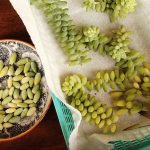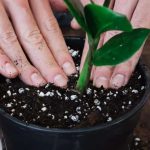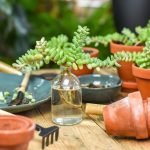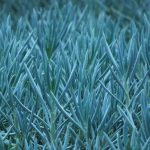Do you want to divide your succulents without the stress? Learn from the expert, Melissa Strauss, on the best methods to ensure excellent outcomes.
Share the joy of propagating low-maintenance succulents with friends and family. Ideal for beginners, these plants save time compared to high-maintenance ones.
While seeds are an option, succulents prefer division for quicker maturity. Seed propagation could be tedious and time-consuming with varying success rates.
Division yields robust plants ready to bloom in just a year. There are different division methods to choose from, making the process as simple or intricate as you prefer.
Discover the most effective techniques for dividing succulents and expand your garden or gift beautiful plants to loved ones.
Keep Your Plant Healthy
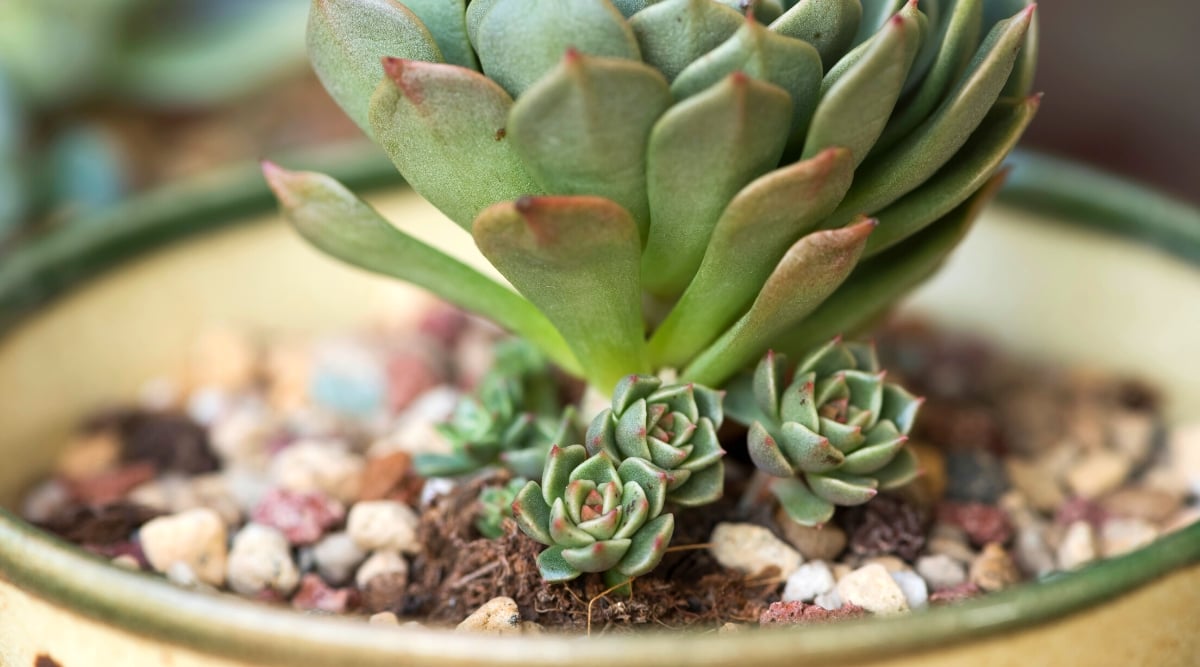

Succulents grow slowly, reducing the frequency of divisions. Wait for your plant to produce offsets before considering division.
Promote offset growth by ensuring plant health. Dividing can usually be done annually with well-cared-for succulents.
Stressed succulents may exhibit color changes. While visually striking, stressed plants are less likely to yield successful divisions.
Understand your succulent’s needs through research. From lighting conditions to watering schedules, cater to specific plant requirements for optimal growth.
To enhance reproductive capabilities, relieve stress on your plant and redirect energy towards propagation.
Assess Plant Strength for Division
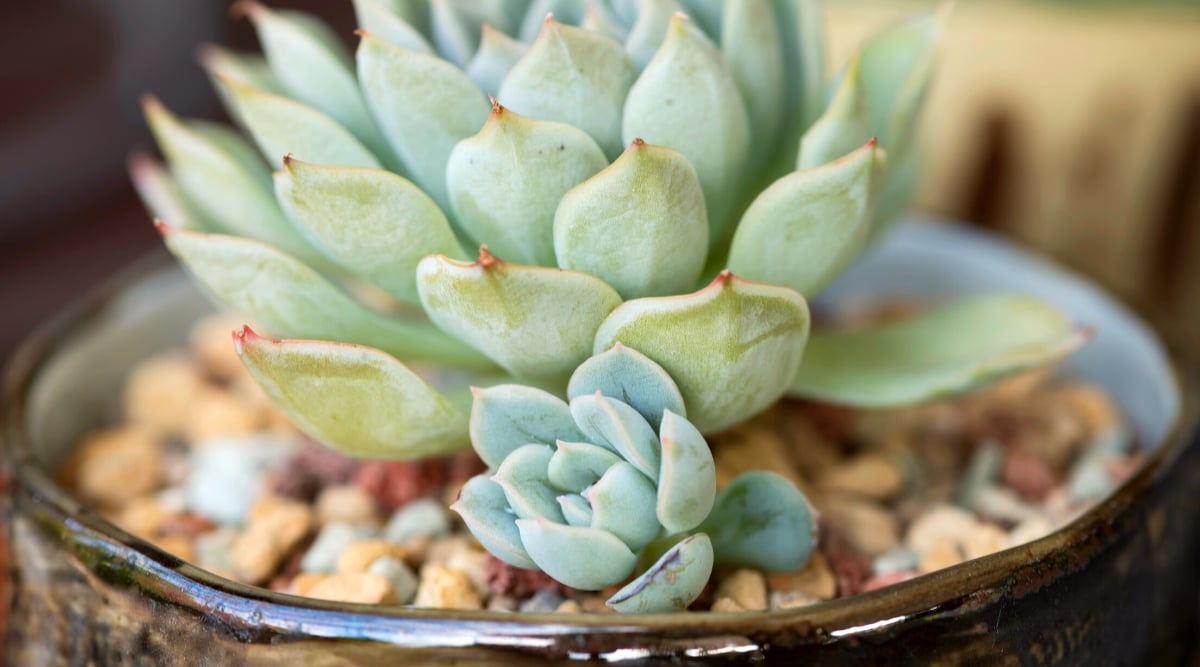
To assess the readiness for division, look for offsets on the plant, indicating it can be divided. While leaf cuttings can be an alternative propagation method, it is a longer path to maturity.
When the offsets resemble a miniature version of the mature plant, they are ready to be divided.
Removing the offsets does not damage the parent plant; on the contrary, the removal benefits the plant by allowing it to redirect nutrients without supporting the offsets.
Remove the Plant From Its Container

To avoid undue harm during plant removal, tilt the container sideways and gently manipulate it to loosen the soil for easy extraction.
Gently lift the root ball and soil by holding the base of the plant to prevent root damage. Exercise caution to prevent breakage, as succulents have delicate roots.
Succulents, though robust once established, can be challenging to repot without leaf breakage due to their rigidity and fragile roots.
If the roots are tightly bound, use a tool or knife to create movement along the container edge or give a gentle push with a chopstick to aid in extraction.
Untangle the Roots
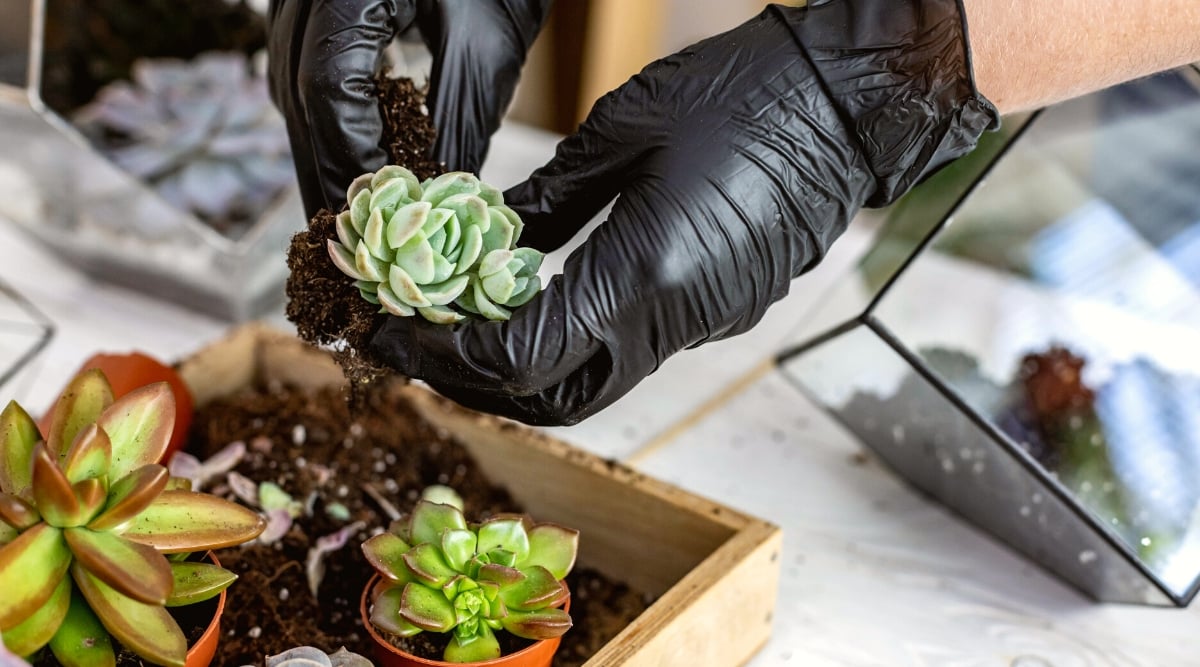

Ensuring your plant is free from the confines of its pot, gently rid it of excess soil by carefully loosening and shaking. This step enables a thorough examination of the roots, vital for determining what needs to be removed to facilitate divisions while still supporting the main plant adequately.
Some succulents, such as aloe and agave, may have pups lacking developed roots, while others already possess initiated root structures. Carefully extracting and disentangling these roots from the parent plant is crucial to ensuring minimal damage and providing each division with a starting root base.
Separating the Offshoots from the Mother Plant
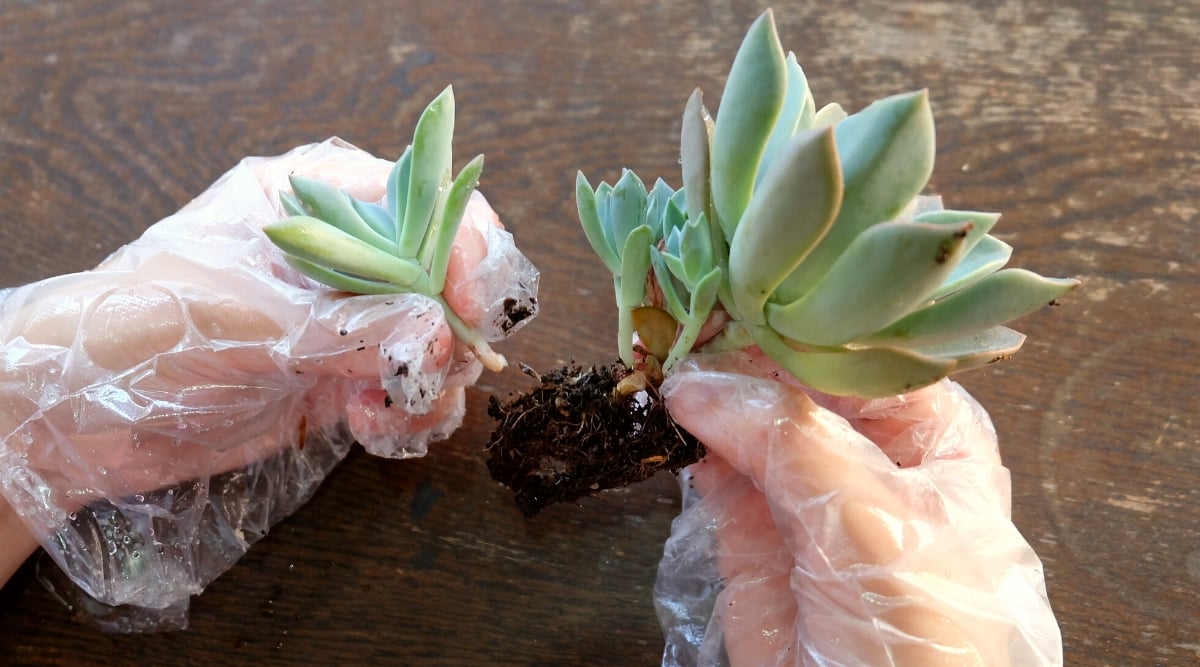

For certain succulents, separating the offshoots can be a simple manual task, while others may require the use of a cutting tool for assistance. When cutting, aim to minimize the distance to the parent plant to avoid harm.
Ensuring there are ample roots left on the parent plant for recovery, while also favoring the new divisions with the same opportunity, is crucial. When uncertain, prioritize leaving roots attached to the parent, allowing the offsets to develop their root systems gradually.
Replanting the Offsets
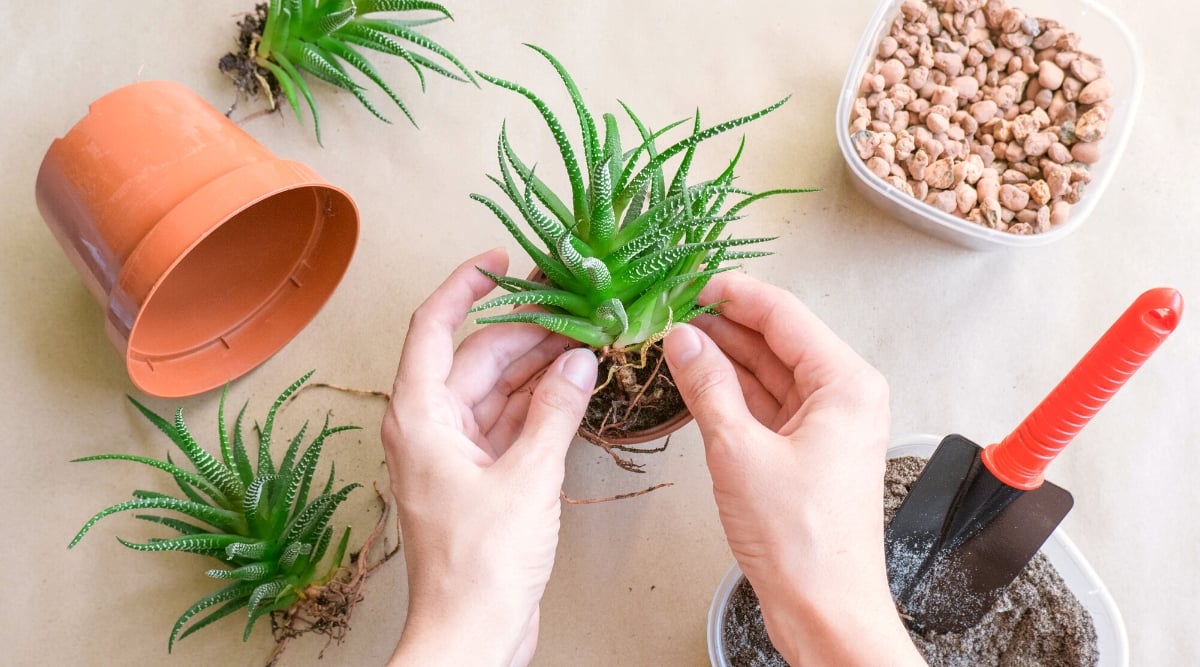

Following the division of your plant, it is essential to repot all segmented parts, including the parent plant, into well-draining containers to prevent waterlogging. Succulents are susceptible to root rot, and aeration is crucial for their delicate root structures.
Succulents thrive when given the opportunity to grow independently, and by providing them with the right environment and care, you can ensure their healthy development.
To ensure optimal growth, don’t bury them too deeply in the soil. Prepare your container by filling it around two-thirds full with a cacti and succulent-specific mix or create your own blend for proper drainage. Regular potting soil can hold too much water, leading to root rot issues.
Creating your own succulent soil involves mixing potting soil with coarse materials like sand, perlite, or pumice in a 2:1 ratio. When planting your succulent divisions, cover the roots entirely while avoiding soil contact with the leaves to prevent fungal rot.
When repotting the parent plant, examine the roots and clean the plant before potting. Trim any damaged root tissue to prevent fungal growth, which can ultimately lead to plant death. Remove any damaged leaves to prevent the spread of pathogens.
An alternative method involves dividing succulents without disturbing the roots. By cutting the pups carefully or pulling them apart, new plants can be propagated successfully. Applying rooting hormone on the cut end can boost root development and enhance the plant’s resilience.
After dividing the succulents, ensure the cut end has dried and healed before potting. Placing the cuttings in a new container and withholding water for a week allows the wound to seal, safeguarding the new plant from infections. Patience and care are key to nurturing healthy succulent divisions that will mature into thriving plants.
In conclusion, delicacy is crucial when dividing succulents to prevent harm to their sensitive roots and leaves. With gentle handling and patience, you can expect healthy plant divisions within a few months, well on their way to becoming robust mature plants.

